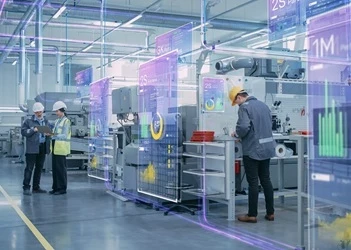Three advantages of switching to microservices
Uncover three reasons why businesses should consider moving away from a monolithic architecture
Add bookmark
Organizations have the choice of two types of architecture to operate, monolithic and microservices. The difference between the two is that monolithic architectures group all applications and services under one umbrella while microservices allows for individual, decoupled solutions that can be worked on independently.
With this in mind, PEX Network takes a look at three of the biggest advantages of switching to microservices.
Microservices allow for easier scaling
One of the primary disadvantages of monolithic architectures is that all applications are connected and integrated. This means when systems and applications need to be upgraded, the entire monolithic system has to be overhauled.
This is a significant barrier to change and can delay, stall or even halt digital transformation efforts. The entangled nature of monolithic applications makes it extremely difficult to identify and isolate services and applications that require upgrading. It is even more challenging to upgrade and scale them when the application receives further development.
Microservices on the other hand are decoupled, which means that each individual unit or application can be adjusted and upgraded independently. Without the need to overhaul a large, monolithic architecture businesses can enjoy much more freedom and scope with regard to the digital transformation and change initiatives they wish to roll out.
Microservices offer more freedom to switch partners
Large, complex projects such as the implementation and management of an enterprise-wide monolithic architecture are often done with the help of partners who offer their expertise. This can unfortunately lead to businesses running the risk of falling victim to vendor lock-in.
In this context, vendor lock-in, is when the architecture becomes so large and complex that any new partner brought in requires extensive training just to be knowledgeable on what has been done so far. This limits the freedom of the business to select individual partners for specific services or different price offerings.
Due to their decoupled nature, microservices offer complete freedom over partnerships. Organizations can develop an individual microservice for the latest technology or trend and move in the market with much more agility than those operating under a monolithic architecture.
Microservices facilitate new developers’ onboarding
The onboarding of new developers has its challenges under a monolithic architecture. New developers will need to be trained on the entire application architecture which in the case of monolithic systems can be a very time-consuming process.
With microservices, however, new developers only need to master the specific unit they have been brought in to work on rather that the entire architecture.
This means that new developers can hit the ground running much sooner and they are much more capable of developing a high level of expertise and understanding in their specific area. The time that would be spent managing and overhauling an entire architecture can be applied in delivering value and excellence in their area of expertise.
Has your business experienced any of these issues with monolithic architecture? Let us know in the comments below.
































